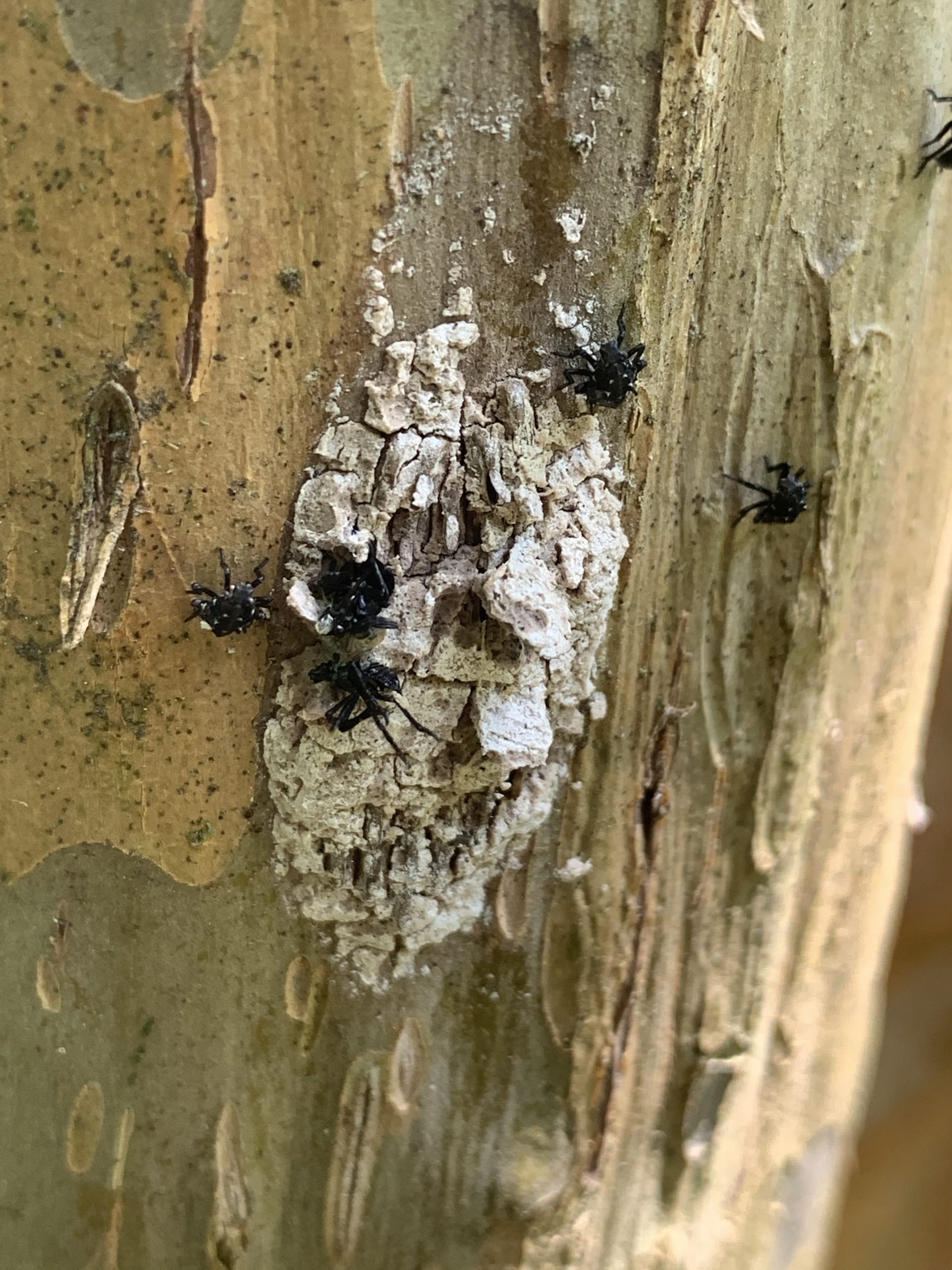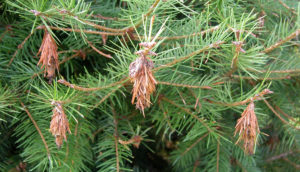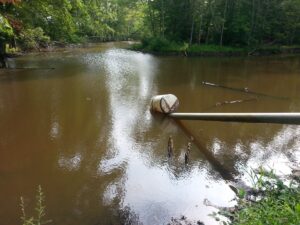
photo by Autumn Angeles
Spotted lanternfly nymphs are hatching throughout the state and first instars are present in multiple vineyards. Lanternfly overwinters in the egg stage and hatch is quite protracted, likely depending on the microhabitat where eggs are laid. In our surveys in 2019-2020, we identified a 2 year delay from the time SLF adults are first identified in the woods bordering vineyards and movement of the adults into the vineyard and laying eggs at levels that require management.
While it may seem counterintuitive, management is not needed as soon as SLF hatches. There is currently no evidence that the nymphs cause any yield loss or plant injury. However, this is an invasive species that requires management and there is no threshold for management against the nymph stage.
Best management practices against SLF nymphs in vineyards are to time management with other key insect management such as grape berry moth or Japanese beetle. This will not only save on insecticide costs but will also allow for all of the nymphs to hatch from the egg masses. See the table below on efficacy of materials targeting multiple vineyard pests.
| Trade name | Active ingredient | Class | Rate per acre | Days of activity | SLF | GBM | JB |
| Brigade 10WSB | bifenthrin | Pyrethroid | 16 oz. | 14 | E | E | |
| Actara 25WDG | thiamethoxam | Neonicotinoid | 3.5 oz | 7 | E | G | |
| Assail 30SG | acetamiprid | Neonicotinoid | 5.3 oz | <7 | G | G | F |
| Carbaryl 4L | carbaryl | Carbamate | 2 qt | 7 | E | G | G |
| Avaunt 30DG | indoxicarb | Oxadiazine | 6 oz | 7 | E | G | G |
| Danitol 2.4EC | fenpropathrin | Pyrethroid | 21.33 fl oz | 7 | E | E | E |
| Belay | clothianidin | Neonicotinoid | 6 oz. | – | G | G | G |
| Baythroid | cyfluthrin | Pyrethroid | 3.2 oz | 7 | E | E |
E = excellent control
G = good control
F = fair control



